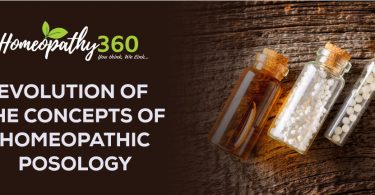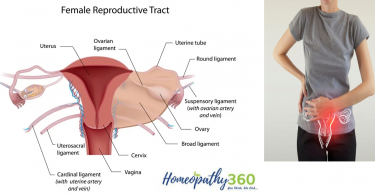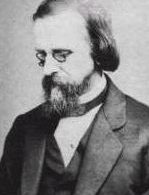
Abstract:
Homoeopathy’s skeptics, always find arguments and excuses to deny the effectiveness of homoeopathy, arguing that homoeopathic studies are flawed, trials in homoeopathy do not comply with the scientific method, and homoeopathic research studies are not too good to be published in prestigious scientific journals. Here, these points will be addressed by defining and discussing concepts and principles as conceived by homoeopathy, contrasted with conventional system of medicine.
Key words:
evidence-based medicine, randomised control trial (RCT), conventional medicine, homoeopathic methodology, placebo effect
Abbreviations: randomised control trial (RCT),
Homoeopathy and evidence-based medicine
In order to keep up with the standards of evidence-based medicine, homoeopaths had to use a parallel scientific model designed for conventional medicine, despite the basic differences between the systems.
One must first consider the role of evidence-based medicine, as this has become the “basic standard” for therapeutics, since the late 20th century. Evidence-based medicine uses current evidence, from scientific research, to assist in the process of making decisions. This concept may be related to an important question: what were decisions in medical care based on, prior to the late 20th century?
The methodologies most commonly used in evidence-based medicine comprise those based on studies that have already been published, such as systematic reviews and meta-analyses, and those used to carry out the studies, such as double-blind randomised controlled trials[1] (RCTs). Here, the focus will be placed on RCTs in the context of its utilisation in homoeopathy. In brief, double blind RCTs are experiments to test medicines and placebo (plain sugar pills) in a blinded fashion, using a randomised group of study subjects with a similar ailment (neither study subjects, researchers nor result evaluators know who is taking placebo, or taking the medicine being tested). If the effect of the medicine on eliminating symptoms is significantly higher than that of the placebo, the medicine is deemed effective for the ailment.
Limitations of RCTs in homoeopathy
The methodology of RCTs, which are applicable for conventional medicine, has several conflicting aspects with the principles of homoeopathy.
èTotality:
Conventional medicine treats symptoms, while homoeopathy treats the individual as a whole and the “totality” includes physica generals, mental generals, emotional symptoms, as well the interactions of the individual1[2] with their environment. RCTs measure only the quantitative parameters, making it subject to errors when used in homoeopathy.
Fortunately, there is a trend in evidence-based medicine towards the use of qualitative methods alone, or with quantitative methods because the benefits of qualitative methods have been demonstrated in studies such as early diagnosis in parkinson’s, and the efficiency of RCTs. Methods such as comparative trials have been proposed to measure the real practise of homoeopathy, where interaction of the both, the specificity of homoeopathic medicine, the non-specificity of homoeopathic consultation are taken into account.
èIndividualisation:
Homoeopathic methodology regards each person as a unique individual with unique characteristics. Homoeopathic medicine selection that takes this individuality into consideration gives excellent results. However, in order to conform to the conditions of group treatment, for a specific ailment used in an RCT, this individualisation cannot exist – despite the reality that this is one of homoeopathy’s uniqueness.
èEfficacy and treatment trials:
However, efficacy trials and treatment trials are carried out in the same way in conventional medicine, but not in homoeopathy though treatment trials can be used in homoeopathy to some extent to determine whether a medicine is more effective than placebo for a condition in trial.
Efficacy trials in conventional medicine fundamentally differ with that in homoeopathy. In conventional medicine, the purpose of these trials is to eradicate (? suppress) symptoms, while in homoeopathy, the purpose of these trials is to producesymptoms.
For a homoeopathic drug proving trial, a substance is tested in a randomised group of healthy subjects. Changes in the condition of the healthy subjects are evaluated individually, and in the group. The outcome of common and significant symptoms is referred to as the drug picture of the proved substance. This substance (medicine) can now be used to treat those experiencing the similar symptoms. The criticism of this proving is because it relies on observations and reporting from the subject and the expert doctors involved in the experimentation.
èPlacebo effect: One of the arguments used by skeptics is that responses to homoeopathic remedies are due to the placebo [3]effect. In efficacy trials, questionnaires are designed to limit the number of symptoms being considered because the number of symptoms experienced by the study subjects can be overwhelming. It is certain that during RCTs, interaction of study subjects with these questionnaires, with limited symptoms, may result in an increased placebo effect, but carefully designed studies ease these interactions. It has been demonstrated that placebo effect resulting from homoeopathic trials is not higher than that obtained from conventional drug trials.
The improvement of ailments suffered by babies and animals (who can’t verbally express what they feel and are not affected by psychosomatic influences) due to homoeopathic treatment is the best clinical evidence that the action of homoeopathic medicines is real, and not a placebo effect.
Similar questions for the skeptics can be:
What about when the role of homoeopathic medicine is in prevention? Homoeopathic medicines have shown to be effective in the prevention of mastitis during the dry period of dairy cows. On the other hand, double-blinded RCTs in animals have shown superior effect of homoeopathic medicines compared to placebo controls.
What about the changes in the growth-rate of plants by homoeopathic medicines, and the in-vitro activation of bone marrow cells by homoeopathic preparations?
èBlinding: The blinding component of RCTs also presents difficulties when applied to homoeopathy. By RCT protocol, the prescriber should not know about the medicine the study subject is taking, so as to avoid biased interpretations during follow-ups while a homoeopath at its first consultation gets the complete history in a homoeopathic format of case taking which includes, through a thorough questioning and thus make each individual unique with a unique similimum The study of this information allows the homeopath to find the most appropriate homoeopathic medicine that will stimulate the body to heal.
In RCTs evaluation, difficulties also arise when the potency is not appropriate, or the subject doesn’t respond for some other reason.
Why is there so much controversy and criticism concerning homoeopathy?
Accepting that homoeopathic medicines have a biological effect, even in potencies where dilution goes beyond avogadro’s number is not easy. It is hard for people steeped in long-established precepts of chemistry to accept the same.
Experiments suggesting theories that could support the effectiveness of homoeopathy, such as “the memory of water”, have been attacked and ignored.
Another important factor delaying progress in high quality research in homoeopathy is lack of funding. Pharmaceutical companies fund a high percentage of the research studies on conventional medicines because the lucrative business for them lies there. However, homoeopathic medicines are extremely cost-effective, so homoeopathic pharmacies do not have that kind of financial strength. Similarly, as far as publication in prestigious scientific journals goes, research relating to homoeopathy is often denied publication for no good reason. To add to the controversy, the media is easily confused about evidence for the effectiveness of homoeopathy, because there are plenty of dominant scientists disapproving any study in the area as non-definitive.
Who could be interested in attacking homoeopathy now, when its popularity is rapidly growing due to the increasing evidence of its effectiveness[4]. Who, lacking real interest in seeing chronic diseases cured and cost-effective improvement of health for people of all the strata, would feel menaced by homoeopathy? Who would have the money and power to fund ignorant skeptics who don’t have an understanding of science, or the application of a ‘scientific method’ to prove or disprove the science of homoeopathy? Who, for obvious reasons, would not be interested in reviewing any clinical evidence or “scientific” proof of homoeopathy? Who could be using their power over the media to counteract the popularity of homoeopathy?
Despite all of these obstacles, more and more evidence in the area of ultra-high dilutions has been published recently. Some particularly interesting publications are:
- A study demonstrating that different high-potency homoeopathic medicines can be distinguished from one another using spectroscopy
- A review that shows preliminary evidence supporting the biologic effects of ultra-high dilutions
- A report on the presence of the starting substance in ultra-high dilutions of homoeopathic medicines, in the form of nanoparticles
Conclusion
The
fact that studies have shown positive results for homoeopathy, despite numerous
obstacles and continual accommodations to fit the standard medical science
model, is a testament to the validity of homoeopathy: safely, surely, gently
and permanent restoration of health.
References
[1]Shere ND. Is the randomized double blind placebo trial an objective scientific instrument?2006; http://hpathy.com [2]Topor A, Borg M, Di Girolamo S, Davidson L. Not just an individual journey: social aspects of recovery. Int J Soc Psychiatry. Jan 2011; 57(1):90-99 [3]Nuhn T, Ludtke R, Geraedts M. Placebo effect sizes in homoeopathic compared to conventional drugs – a systematic review of randomized controlled trials. Homoeopathy. Jan 2010;99(1):76-82. [4]Green J, Britten N. Qualitative research and evidence-based medicine. Bmj. Apr 18 1998; 316(7139):1230-1232.———————————————————————————————————————————-
* H.O.D, Dept. of Practice of Medicine, Rajasthan Vidyapeeth Homoeopathic Medical College, Dabok, Udaipur (Rajasthan), India
**Principal & H.O.D, Dept. of Organon of Medicine & Philosophy Rajasthan Vidyapeeth Homoeopathic Medical College, Dabok, Udaipur (Rajasthan), India
*** H.O.D, Dept. of Preventive & Social Medicine, Rajasthan Vidyapeeth Homoeopathic Medical College, Dabok, Udaipur (Rajasthan), India
About Author:
Prof. (Dr) Aejaz Husain*
BHMS; DECE; MSc. (DM); PGDHRM
Prof. (Dr) A Goswami**
MD (Hom), PhD
Prof. (Dr) Naveen K Vishnoi***
BHMS; M.Sc. (DM), MBA





